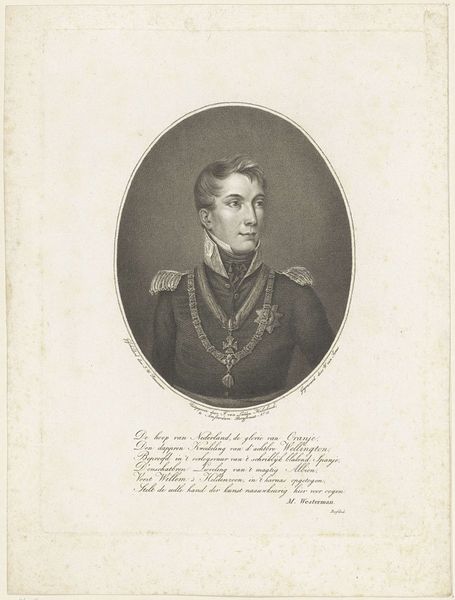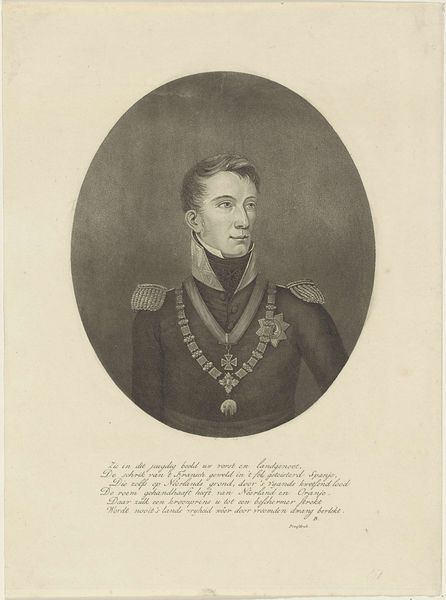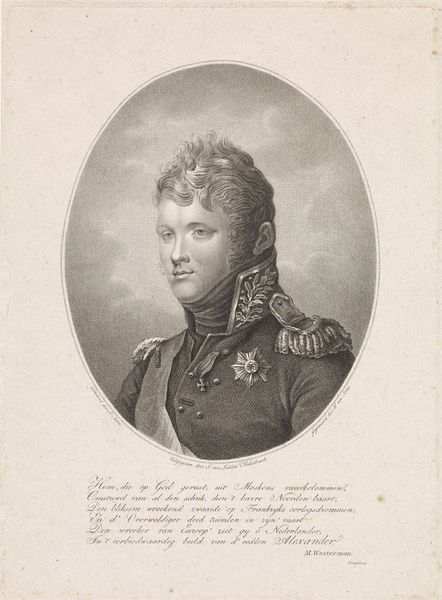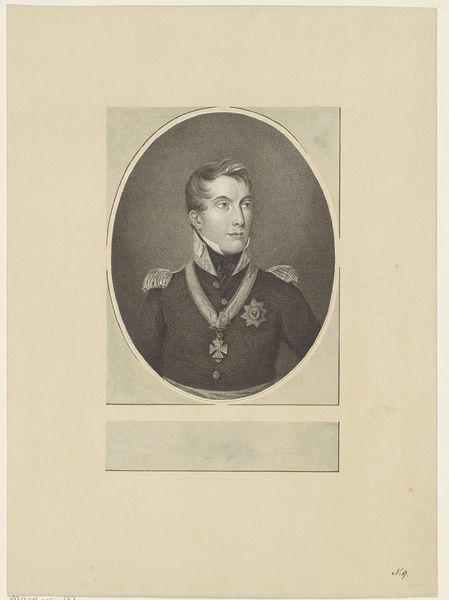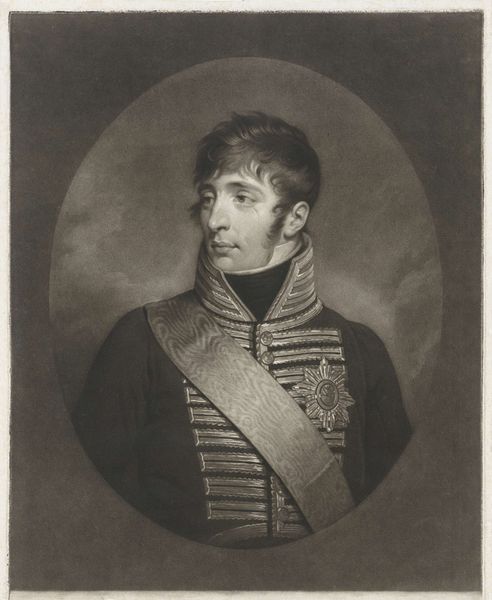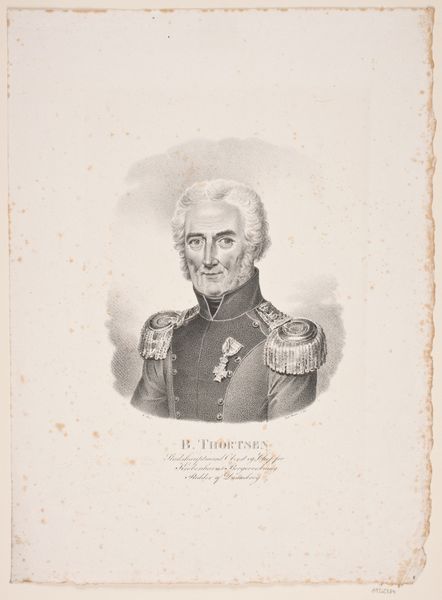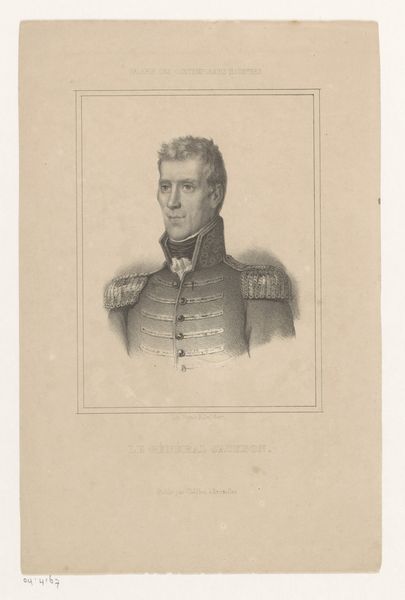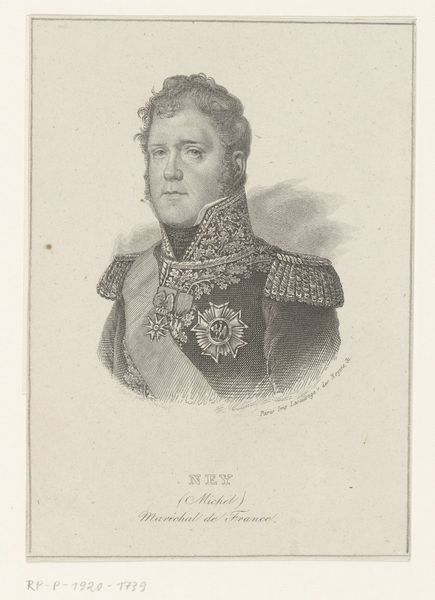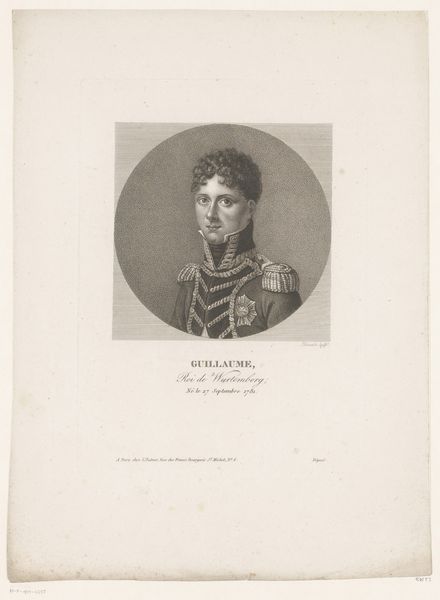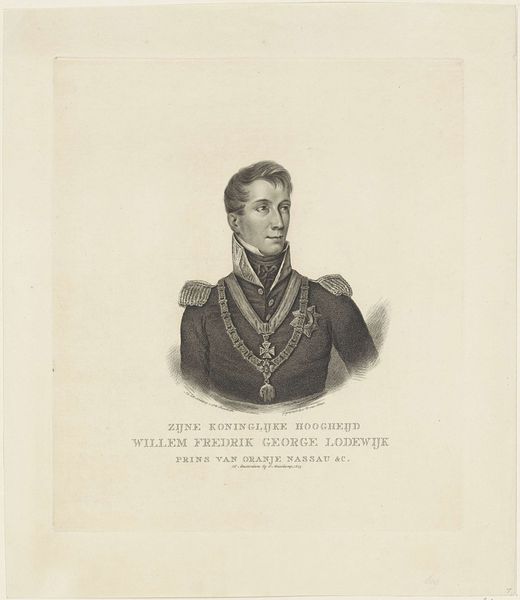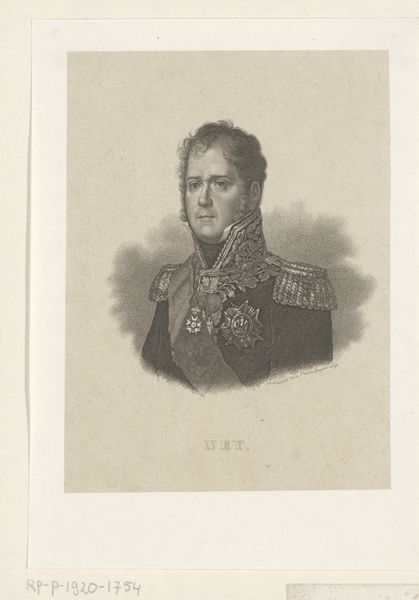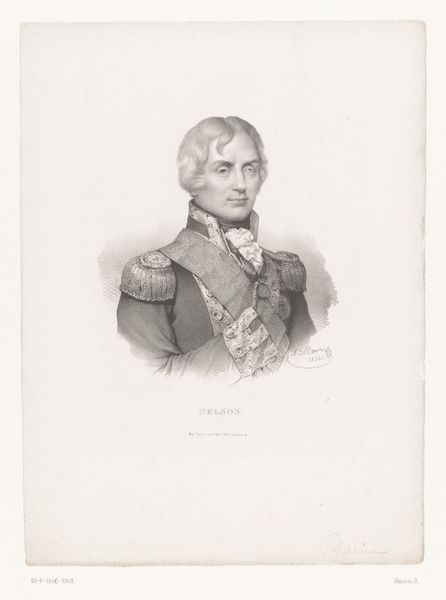
engraving
#
portrait
#
pencil drawn
#
neoclacissism
#
light pencil work
#
pencil sketch
#
figuration
#
pencil drawing
#
line
#
history-painting
#
engraving
Dimensions: height 324 mm, width 255 mm
Copyright: Rijks Museum: Open Domain
This is Martinus van Looyen’s portrait of Alexander I of Russia, made with etching. The Dutch artist created this portrait during a time of political upheaval in Europe, likely reflecting the shifting alliances and power dynamics of the Napoleonic era. Etchings like this were important for disseminating images of political leaders, constructing and circulating a specific image of power. It solidified Alexander's image as a European leader worthy of representation through formal portraiture. Consider the way Alexander is presented: his uniform, his gaze, the overall composition. These are all visual cues designed to communicate authority and strength. The text below further adds to the image's narrative, perhaps alluding to the political climate. To fully understand the significance of this portrait, we need to consider the historical context, the artist's intentions, and the work's reception. This is where historical resources such as letters, journals, and political documents can provide further information.
Comments
No comments
Be the first to comment and join the conversation on the ultimate creative platform.
